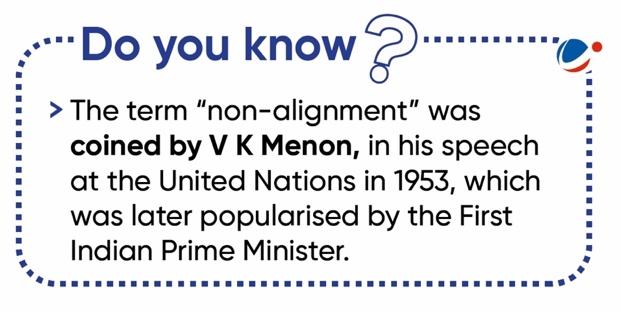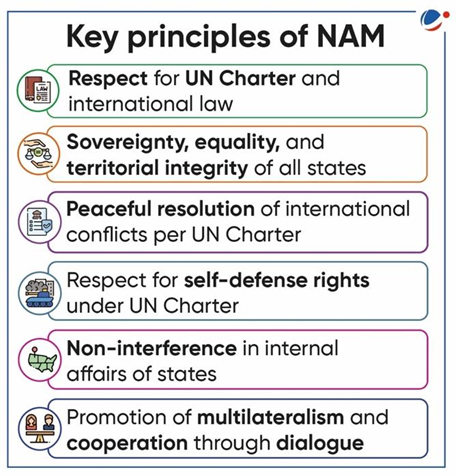Why in the news?
Recently, 19th Summit of the Non-Aligned Movement (NAM) was held in Kampala, Uganda.
More on News
- Theme of the summit: 'Deepening Cooperation for Shared Global Affluence'
- Kampala declaration was adopted at the summit. Under it, member countries,
- commit to strengthen the UN as the primary multilateral organization
- agreed to make joint efforts to realize the 2030 Agenda for Sustainable Development and the Addis Ababa Action Agenda (AAAA)
- AAAA provides a global framework for financing sustainable development by aligning all financing flows and policies with economic, social and environmental priorities.
- strongly condemned the illegal Israeli military aggression on the Gaza Strip and called for an immediate and durable humanitarian ceasefire.
- South Sudan became the new member (121st) of NAM.


About Non-Aligned Movement (NAM)
- Genesis: Asia-Africa Conference held in Bandung, Indonesia in 1955.
- About: NAM was created during the independence struggles of Africa, Asia, Latin America and other regions of the world at the height of the Cold War.
- A key role was played in this process by the then Heads of State of Egypt, Ghana, India, Indonesia and Yugoslavia, who later became the founding fathers of the movement.
- The idea was to declare themselves as "nonaligned" from either of the two nascent military blocks (NATO and the Warsaw Pact).
- Principles: "Ten Principles of Bandung" proclaimed during Bandung Conference were later adopted as the main goals/principles of NAM. (Refer Image)
- NAM’s first conference - The Belgrade Conference in 1961.
- Membership: It has 121 members (including India) comprising 53 countries from Africa, 39 from Asia, 26 from Latin America and the Caribbean and 2 from Europe.
- 18 countries and 10 international organizations are observers at NAM.
- Other Key information:
- The policy of NAM was based on the 5 principles of Panchsheel (principles for the conduct of international relations, signed between India and China in 1954).
- The NAM does not have a formal founding charter or treaty, nor does it have a permanent secretariat.
Challenges faced by NAM
|
Current Relevance of NAM
- Reform and democratization of UNO: NAM advocates for expediting reform of the United Nations Security Council to make it a more democratic, transparent and representative organ of the United Nations.
- Protecting Sovereignty: NAM countries support the principles of self-determination, respect for territorial integrity, non-aggression, and safeguarding the independence and autonomy of member states.
- An integral part of foreign policy: Many developing countries like India still follow the NAM policy, as ‘independence of action’ in foreign policy is enshrined in NAM.
- Unifying force: NAM is still applicable as a strict measure to prevent colonization and imperialism of small and developing countries.
- Platform for South-South Cooperation: It provides a platform for developing countries to come together and discuss common challenges and interests and exert influence in global affairs.
- Promoting Multilateralism and Global Peace: NAM upholds the principles of multilateralism, diplomacy, and peaceful coexistence;
- NAM’s advocating for democratising UN and condemning Israel’s war is a testament to this.
- Rising importance of the concept of Active Non-Alignment (ANA): It embodies a pro-active attitude (instead of passive neutrality) which is aimed at solving problems and generating the much-needed solutions for the troubled world.
Non-alignment vs Neutrality
|
Conclusion
NAM needs to redefine itself and reinvent its objectives in the contemporary world system. NAM continues to be relevant so long as there is exploitation, war, hunger, poverty and disease on the earth.



